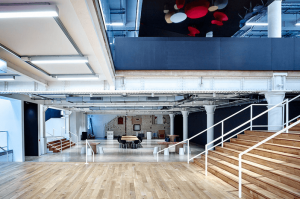During the last 65 years, the landscape of commercial architecture has changed massively. Most notably, it’s done so in many unique ways. Our history continues to inform and influence how we build today as well.
Crucially, contemporary businesses can now take advantage of unequalled heights of artistic and technological innovation. This results in healthier bottom lines. There is also more options to ensure better branding and a smoother customer experience. What we want to do is look back on the decades to see how far the architecture has come in a commercial sense.
The 60s and 70s
Firstly, during the 60s, a lot of the architecture was dominated by businesses concentrating on function. Buildings were typically built with the main aim of serving practical needs. Ornamentation was often only an afterthought. The majority of properties were decidedly boxy. They only began evolving into more visually interesting styles during the 70s. It laid the practical groundwork for the diverse efforts that would follow.
The 80s and 90s
 After a period of austerity in the UK in the 70s, we got a volatile 80s. It began with recession but ended with a boom in the second half. It triggered a postmodern shift in architecture. There was a huge change in architectural styles as we saw the economy move to focus on services rather than manufacturing.
After a period of austerity in the UK in the 70s, we got a volatile 80s. It began with recession but ended with a boom in the second half. It triggered a postmodern shift in architecture. There was a huge change in architectural styles as we saw the economy move to focus on services rather than manufacturing.
As postmodernism took hold on the cultural mindset, architects started challenging the firm approach of recent decades. They began focusing on more experimental, eclectic designs. New colours and materials became a feature of commercial architecture. People also did more upgrades of older designs with new facades. They gave new avenues for branding and expression.
The 2000s to 2020s
Entering a new millennium, sustainability took its place as a central part of commercial structures. Innovative builders began using new, green building practices. Also, they chose more sustainable ways to source materials. Certain certifications became sought after for projects too. This is still true today, including things like BREEAM and WELL.
Speaking of today, commercial buildings are different. They are now a vibrant mix of classic, timeless styles and contemporary innovation. Rustic and industrial looks can merge with new technology and sustainable practices. This creates structures that are forward-thinking, dynamic, and beautiful.
Moreover, with new methods continuing to appear, there is more potential than before. Modern commercial buildings now tend to characterise a cultural spirit of responsibility to the planet. Additionally, they promote vibrant expression and bold innovation.
Do you have plans for commercial architecture?
At Coffey Architects, our guiding principles are craft, curiosity, and collaboration. By working together, exploring new ideas, and prioritising quality, we can help clients achieve their goals. Ours is a team made up of creative minds that all have a passion for design. Therefore, you have the perfect people beside you for every project.
So, whether you’re looking to build commercial architecture or something else, we can help. If there’s anything we can do for you, let us know.